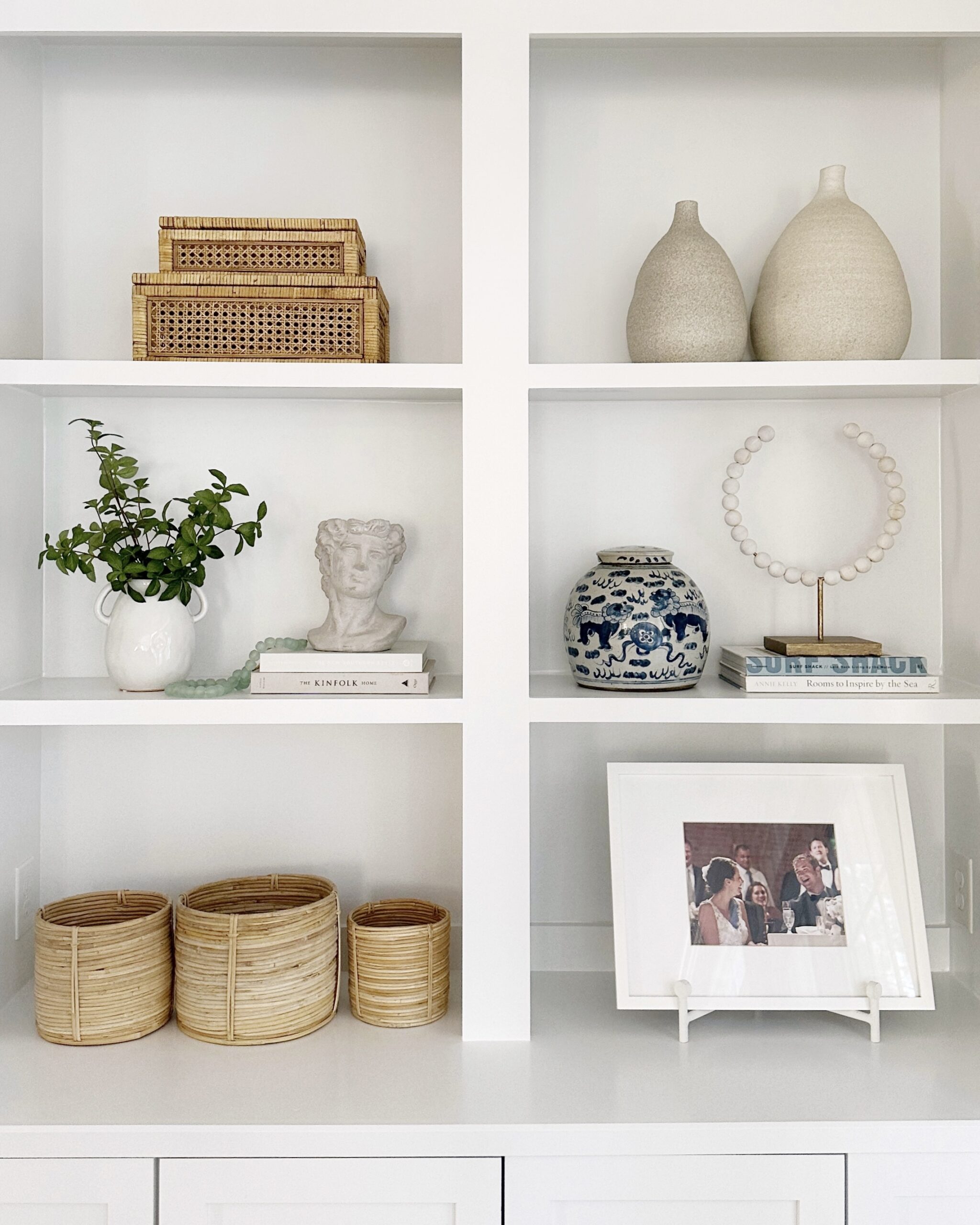Limewashing Brick
When we purchased our home several years ago it was painted green with red brick on the lower half. While there was nothing wrong with the color or style, it just wasn’t for us. Our home is a classic Lowcountry style set beautifully into nature, surrounded by pine trees and other natural beauties. The green color blended into the backdrop and left much to be desired. We painted the house white and decided that limewashing the brick would soften the red and help to really transform our exterior to the coastal home of my dreams!
I craved something softer and more unique with a touch of originality. After doing some research on painted brick makeovers, I decided to limewash our brick. Limewash is a type of whitewash that can be used on masonry and gives a softer look than paint. It’s also less expensive and easier to apply than paint.
In this post, I’ll dive into everything you need to know about limewashing and how the process worked for us.
What is Limewash?
Limewash is a type of whitewash made with calcium hydroxide and water. It’s been used for centuries as both an interior and exterior paint finish. It’s popular in Europe and becoming more common in the United States. Limewash gives a beautiful customized look to traditional brick.
Limewash is a natural paint alternative that is eco-friendly and breathable. It allows the masonry to “breathe” which is important for preventing moisture damage.
Limewash is also very low VOC (volatile organic compounds) and has little to no odor. This can be a big selling point for families that don’t want to use harsh chemicals near their homes or around kids and pets.
Limewash vs Whitewash
Limewash and whitewash are often used interchangeably, but there are some key differences. First, limewash contains calcium hydroxide while whitewash does not. Second, limewash is thinner and has a chalky appearance when dry, while whitewash is thicker and has more of a matte finish.
Limewash is also less likely to peel or flake than whitewash because the calcium hydroxide reacts with the carbon dioxide in the air to form a hard, protective layer. This made it the perfect choice for us to give our home’s facade a makeover since we live in a climate that can experience all sorts of weather conditions – hurricanes and major humidity included!
Most Common Types of Brick Exterior
When you’re looking at brick for your home, there are three main types of brick exterior: solid, veneer, and adobe. First, let’s talk about solid brick. Solid brick is made entirely of fired clay bricks that are mortared together. This type of brick is the strongest and most durable. It’s also the most expensive.
Next, veneer brick is a thin layer of bricks that is applied to a frame made of wood or steel. Veneer is less expensive than solid brick and can be used to give the appearance of solid brick without the added cost. This kind of brick also has less chance of moisture absorption and mold growth versus traditional brick. It’s a win-win!
Adobe brick is made from a mixture of water, sand, clay, and straw that is formed into bricks and then left to dry in the sun. Adobe brick is the least expensive type of brick but it is also the least durable. You’ll find this brick used in the Southwest and often referred to as mud brick.
What Does Limewashing Do to Brick?
Limewashing your brick will give it a soft, chalky appearance. After painting our home exterior Charleston White, we wanted to soften the appearance of our red brick. It’s a great way to update the look of your home without painting over the brick entirely. It also ages the brick while giving it more character, often seen on the streets of the historic homes in the Lowcountry.
Limewashing can also help to protect your brick from the elements and prevent moisture damage. The calcium hydroxide in the lime wash reacts with the carbon dioxide in the air to form a hard, protective layer.
Limewashing is a great way to add some texture and interest to your home’s exterior. The chalky finish can help to disguise imperfections in the brick and give your home a unique look. After replacing our front porch with composite materials, we wanted to make sure we selected something that would last for years to come!
How to Limewash Brick
We started our limewashing journey by pressure washing the brick to remove any dirt or debris. This step is important because you want the limewash to adhere to the brick, not the dirt. Unfortunately, we selected to do the limewash after painting the house and it left our painters with a mess to clean up – they also had to add another coat of paint on the house. I recommend doing the limewash prior to painting your home if you can!
Next, we used a limewash product from Keim, that was purchased locally. We used a pump sprayer to apply the limewash to the brick. It’s important to note the ratio you use so you can achieve a cohesive look across all of the brick. The more water you use, the more transparent the wash will be.
We worked in small sections, spraying on the limewash and then using a brush to spread it evenly. We let the limewash dry for 24 hours before applying a second coat. The painters pressure washed and used a brush to softly remove the limewash until only a small amount remained. The best part about this step is that it’s totally customizable and you can leave as much or as little as you’d like, depending on the style of your home.
Please note, this step is messy and the limewash gets on EVERYTHING. So do not forget to prep and know that you will need to clean up after this process.
After the second coat dries, you can apply a sealer to protect the limewash and help it last longer. After talking with our painters, we decided to skip this step; I’ll update you all in the future as to how well it holds up!
Lime Washing FAQs
Before beginning your limewashing journey, check out some of these frequently asked questions to get a better understanding of the project.
How Long Does Limewash Last on Brick?
Limewash is a very durable finish and can last for many years with proper care. It is best to reapply every three to five years to maintain the original look. To clean limewash, simply use a soft brush and mild soap. You can also pressure wash it if necessary. Be sure to use a low-pressure setting to avoid damaging the brick.
Is It Best to Limewash or Whitewash Brick?
There is no definitive answer to this question since it depends on personal preference. Some people prefer the look of limewash because it is softer and more subtle than whitewash. Others prefer whitewash because it has a more matte finish and offers more coverage.
It is also important to consider the type of brick you have when making your decision. For example, if you have a soft brick, it is best to use limewash. If you have a hard brick, either limewash or whitewash will work.
Is It Cheaper to Limewash or Paint Brick?
Limewash is typically cheaper than paint because it is less labor intensive and requires fewer materials. However, the cost will vary depending on the size of your project and the type of brick you have.
If you are considering painting your brick, be sure to get an estimate from a professional first. The cost of painting can be high, and it is important to make sure it is done correctly to avoid damage.
Can You Seal Limewash Brick?
Yes, you can seal limewash brick if you want to add an extra layer of protection. Sealing will also help to maintain the original color and finish. There are many types of sealant available, so be sure to choose one that is compatible with limewash.
Sealing is not necessary, but it can be helpful if you want to extend the life of your limewash. Be sure to follow the manufacturer’s instructions carefully to avoid damaging the brick.
Is Limewash Safe for Brick?
Yes, limewash is safe for brick and will not damage it in any way. In fact, limewash can actually help to protect your brick from the elements and prevent moisture damage.
Can You Limewash Brick Floors?
Yes, you can limewash brick floors if you want to add a unique touch to your home. Limewash is a great way to update the look of your floors without painting them entirely. Be sure to choose a sealant that is compatible with limewash to protect your floors.
Is Limewashing Brick Permanent?
No, limewashing brick is not permanent. It is a very durable finish, but it will eventually need to be reapplied every three to five years to maintain the original look.
Overall, we were very happy with the results of our limewashing project. The brick looks clean and fresh, and the chalky finish adds interest and texture to our home’s exterior. Plus, we know that the limewash is helping to protect our brick from the elements. What do you think? Are you going to add limewashing to your home project list?


















